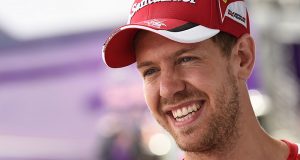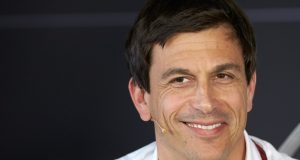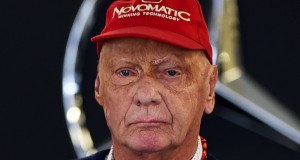The Renault F1 Team looks ahead to this weekend’s Turkish Grand Prix.
Robert Kubica: “We can be competitive in Turkey”
After your podium in Monaco, we head to Istanbul Park in Turkey – a completely different sort of track. What are your expectations ahead of the weekend?
The race in Monaco was our strongest performance so far this season, but it’s important that this result doesn’t make us overoptimistic because I think it will be difficult to repeat that pace this weekend. However, I still think we can be competitive in Turkey because the circuit characteristics are similar to Barcelona where we had good performance from the car. I’m also hoping that the new updates we have for this race will help us close the gap and qualify a little bit higher up than we did in Barcelona.
After six races you’re less than a race win away from the championship lead. Did you ever imagine that was achievable at the start of the year?
We had some idea during winter testing of what the car was capable of, we understood its strengths and we worked on maximising them. But I’m still a bit surprised to have scored so many points, which shows what a good job we are doing as a team. We have taken the opportunities that have come our way, especially in unusual races like Australia or the wet qualifying session in Malaysia. We’ve also taken our opportunities when the car has been strong, as we did in Monaco. So I think we can be very pleased with what we have achieved and proud of all the hard work at the factory to bring new parts for the car every weekend. But we know there is still a long way to go this season and we need to continue pushing hard and improving the car.
What do you think of the Istanbul Park circuit?
It’s certainly one of the best modern circuits with some nice corners, especially in the first sector of the lap. The final sector is a bit ‘mickey-mouse’ with some slow corners and is the complete opposite to the first sector, which means you have to make a compromise with the set-up. There’s also turn eight, which is quite a challenging corner and will be very interesting at the start of the race with a full tank of fuel.
Vitaly Petrov: “You have to be on top of your game all the time in F1”
Vitaly, you experienced a tough weekend in Monaco. What did you learn from it?
Monaco was a really hard result for me. Even starting from 14th, our aim was to make it into the points, but we didn’t manage to get the maximum from the race on Sunday, and this is something that the team and myself have analysed together. I had hoped for more, but it showed me once again that this is how things are in Formula 1: you have to be on top of your game in every area, all the time, to get strong results.
Istanbul Park is generally a circuit that the drivers enjoy. Is it the same for you?
Yes, it’s a place that I like. You can overtake there, the circuit is wide and I enjoy the different kinds of corners – not just turn eight, but the rest of the lap too. To be honest, in GP2 turn eight was not so difficult but I will need to learn the circuit again in an F1 car. Like every race, my aim will be to do my maximum, and I’m pleased to be driving at a circuit I know well.
How important will it be to have a trouble-free weekend in Turkey?
Like I said, you have to be on top of everything in Formula 1, all through the weekend, if you want to get a good result. That means you’re always pushing hard. In Monaco, the gaps were really close, and I was pushing right to the limit to find the extra tenths of a second when I crashed in qualifying. For Turkey, I will be pushing hard again to do my best, but the target will be to put everything together and have a clean weekend.
What are your expectations for the weekend?
It’s hard to say; I think we will have to wait until Friday practice to see how the car is performing. In terms of qualifying, the target has to be to get in the top ten at least, and then we will see what happens on Sunday…
Eric Boullier: “The car is improving race by race”
Eric, looking back to Monaco, how rewarding was it to see Robert finish on the podium?
The Monaco Grand Prix is always a special weekend and so it was great to see the R30 performing so strongly. It’s one of the greatest driving challenges of the year which requires a very reactive car and tremendous driver skill. As soon as practice began on Thursday we could see that our car was very competitive and Robert in particular was able to capitalise on this and brought home a very special result. Of course, when you start on the front row you aim for the victory, but I think we can very proud of our performance.
Were you surprised just how strong the R30 was in Monaco?
It was a very pleasant surprise. We knew that the car would suit the circuit, but we were not expecting to be competitive enough to take the fight to Red Bull. Having said that, I know how much effort and hard work has been done to improve the car since the start of the season, and we have seen a clear upward trend with performance added race by race. The R30’s mechanical package is certainly one of its biggest strengths and that contributed to our pace in Monaco.
Can we expect a similar level of competitiveness in Turkey this weekend on a more traditional layout?
I never like to make predictions, but we have to remember that Istanbul Park is a circuit with completely different characteristics to Monaco. We know that the car works well on tight, twisty circuits, but, as we saw in Barcelona, we still need to find some performance on circuits with a more classic layout. We will have some more developments in time for this weekend and they should place us somewhere between our Barcelona and Monaco pace, which will give us a good opportunity to fight well inside the points.
Robert seems to be a natural fit at Renault and a real motivator of the team. How important is that for team morale?
It’s worth remembering that it’s still relatively early days in our relationship with Robert, but already he has an excellent understanding with the team and works well with everybody. I’ve spoken before about his work ethic and it’s such a pleasure to work with a driver who is as hungry for success as we are. Seeing his enthusiasm and commitment is definitely a big boost for the whole team, both at the track and the factory. And, as the season continues, I think we can expect Robert to become even stronger as our relationship develops and we get to understand him even better.
Vitaly has suffered a few disappointments in the last few races. What’s his mindset like at the moment?
The last few races have certainly been a little frustrating for him and it’s important that he puts that behind him, refocuses and concentrates on his driving. In Monaco he had a good start to the weekend and it was clear that he had the pace to qualify in the top ten until his accident in qualifying. Had he made it through to Q3, I’m sure he could have scored some points. So we know that he has the speed and it’s just a case of putting together the perfect weekend, and that’s the challenge when you are a rookie. The last few races have taught him a lot and I’m sure he will come back stronger this weekend.
Finally, what are your expectations for the race?
My hope is that we can get the maximum from our package and get both cars in the points.
Robert Kubica’s guide to Istanbul Park
When I think about Turkey the first thing that comes to my mind is that it’s normally a very hot race. Also, the traffic is always busy, especially over that bridge which links Europe and Asia. That’s why I always try and stay in a hotel on the Asian side – that saves a lot of time and your nerves too!
Istanbul Park is one of the best of the modern tracks with a great first sector which has lots of long, smooth corners. The first corner is quite tricky because there is a blind apex and you begin to turn in before you can see the inside kerb. Then you go up the hill through turn two, which is a very long corner and on the opening lap of the race it’s quite exciting with a bit of action as the cars run alongside each other.
In the middle of the lap, you come to turn eight, which is a four apex corner taken at about 260 km/h. The biggest problem is not so much the line to take, but the bottoming of the car because there are a lot of bumps. With the current cars it’s nearly a flat-out corner, so it’s not really a big challenge, although it will be on the opening lap when the tyre pressures are quite low and the car is heavy on fuel. One thing you have to watch is the right front tyre, which is under a lot of stress and can grain quite a lot because of this corner.
After turn eight you go downhill on the approach to turns nine and ten, which make up a chicane that suddenly goes uphill. You can carry a lot of speed in, but if you’re not careful you can lose it on the exit because it’s very easy to run wide – as Vettel did last year on the first lap. Sometimes you have to change your line, especially if you’re racing someone, and you can sacrifice entry speed to try and get on the power early on the exit. It’s a strange corner and one I always give a lot of respect to because you never get the perfect balance through it.
The best chance to overtake is the last section of the lap into turn 12, which is after the long straight and heads into that ‘mickey-mouse’ section. You can run side-by-side, but you are always limited by traction and front-end grip. Unless someone makes a mistake it’s quite hard to get past.
As for the car set-up, it’s a compromise between the first and last sector of the lap. If you choose a high-speed set-up where you’re good aerodynamically for the first sector, you sacrifice mechanical grip so you lose that traction and braking stability, which is especially important in the final sector.
Taming turn eight
Ask any driver on the grid a question about Istanbul Park and it won’t be long before they mention turn eight. As corners go, it’s pretty special and has already built up a fearsome reputation. It’s a 260 km/h rollercoaster, with a few bumps thrown in for good measure, and puts immense g-forces through the car and driver. Mastering the corner requires a sound set-up and supreme driver skill.
Although turn eight is usually described as a quadruple-apex corner, the drivers will treat it more like a double-apex corner. And, like any corner, the engineers still think of turn eight in three phases: turn-in, mid-corner, and exit. The only difference is that this corner is one of the longest of the season taking a full eight seconds from corner entry to corner exit. And in that time the car travels 600 metres with a top speed of 270 km/h.
The g-force stats are just as impressive with the drivers experiencing an average lateral force of 4.3 g during those eight seconds, with a peak of 5.2g. So it’s tough on the drivers’ necks and don’t be surprised to see some extra padding appear on the headrests this weekend to help the drivers through the 58 laps of the Grand Prix.
Set-up wise, the team will concentrate on finding a good aero balance to keep the cars glued to the track through this high-speed corner with the front wing set up to provide good front end stability. Another important parameter is the car’s ride height, as Chief Race Engineer Alan Permane explains: “There are a couple of bumps in turn eight so we need to make sure that the car doesn’t start bottoming, especially at the start of the race when we are heavy on fuel. So choosing a ride height setting that will work for both qualifying and the race is a priority. The challenge is to set the car up so that it’s drivable in all conditions.”
It’s those bumps on the racing line which will make it challenging for the drivers to take turn eight flat, even in qualifying trim. “It’s always been a tricky corner because of the bumps, which upset your balance,” confirms Robert Kubica. “Last year it was nearly flat so we will have to see what it’s like this year. I’m not expecting it to be particularly challenging during qualifying, but it will be at the start of the race when your tyre pressures are low and the car is heavy on fuel.”
While those first few laps of the race will be a step into the unknown, the drivers know that turn eight will become easier as the fuel load comes down. And assuming that the tyres don’t degrade too much, there could be a chance of cars taking turn eight flat in the closing stages of the race.
Talking of tyres, turn eight has traditionally been a ‘tyre killer’ with the front right subject to sustained high loadings on every lap, which can lead to graining. Understanding tyre performance will therefore be at the top of the job list when free practice gets underway on Friday.
© RIF | Renault F1
 Racing In Focus Motorsport and Events Coverage | Racing News, Results, Photos.. from Formula 1, American Le Mans, NASCAR, IndyCar and Canadian racing
Racing In Focus Motorsport and Events Coverage | Racing News, Results, Photos.. from Formula 1, American Le Mans, NASCAR, IndyCar and Canadian racing



